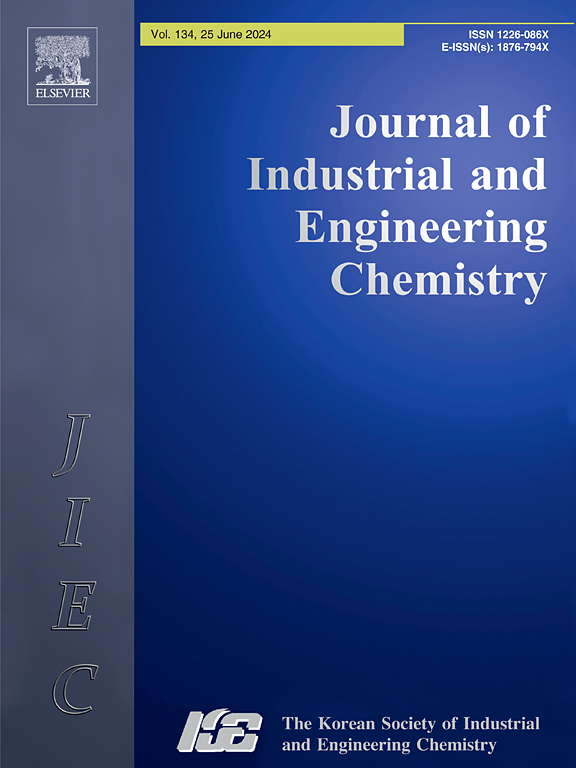过一硫酸盐增强多环芳烃污染土壤的电动修复:周期性电场的影响
IF 5.9
3区 工程技术
Q1 CHEMISTRY, MULTIDISCIPLINARY
Journal of Industrial and Engineering Chemistry
Pub Date : 2024-10-26
DOI:10.1016/j.jiec.2024.10.050
引用次数: 0
摘要
本文章由计算机程序翻译,如有差异,请以英文原文为准。
Peroxymonosulfate enhanced electrokinetic remediation of PAHs-contaminated soil: Effects of periodic electric field
Power consumption is a key factor that affects the cost of electrokinetic (EK) remediation technology. However, the impact of a periodic electric field on organic pollutant removal and energy saving when using EK enhanced chemical oxidation technology has been unclear. In this study, one experiment with a continuous current and five experiments with periodic electric fields of different periodic frequencies (1:1, 2:1, and 3:1) and power-off times (0.5, 8, and 24 h) combined with peroxymonosulfate (PMS) were performed to remove polycyclic aromatic hydrocarbons (PAHs) from soil. The results showed that the average current decreased along with an increase in the periodic frequencies (from 1:1 to 3:1). However, under the same periodic frequency (2:1) with different power-off times (0.5, 8, and 24 h), the currents were relatively close. Compared to the continuous current treatment, different periodic frequencies and power-off times all improved the PAHs removal rates, particularly those PAHs with high ring numbers. Among them, the treatment with the 2:1 periodic frequency and 1 day power-off time achieved the highest removal efficiency (36.1 % of total PAHs) and successfully enhanced PAHs removal in the anode area. Except for the treatment with the 1:1 periodic frequency and 1 day power-off time, the unit energy consumptions of the other periodic electric field treatments were lower than that of the continuous current treatment. This study demonstrates that a periodic electric field could reduce unit energy consumption and improve the PAHs removal efficiency, and the periodic frequency was a crucial factor. This study provides a new technical option for PMS-enhanced EK remediation of organic polluted soil and promotes the application and development of EK remediation technology.
求助全文
通过发布文献求助,成功后即可免费获取论文全文。
去求助
来源期刊
CiteScore
10.40
自引率
6.60%
发文量
639
审稿时长
29 days
期刊介绍:
Journal of Industrial and Engineering Chemistry is published monthly in English by the Korean Society of Industrial and Engineering Chemistry. JIEC brings together multidisciplinary interests in one journal and is to disseminate information on all aspects of research and development in industrial and engineering chemistry. Contributions in the form of research articles, short communications, notes and reviews are considered for publication. The editors welcome original contributions that have not been and are not to be published elsewhere. Instruction to authors and a manuscript submissions form are printed at the end of each issue. Bulk reprints of individual articles can be ordered. This publication is partially supported by Korea Research Foundation and the Korean Federation of Science and Technology Societies.

 求助内容:
求助内容: 应助结果提醒方式:
应助结果提醒方式:


